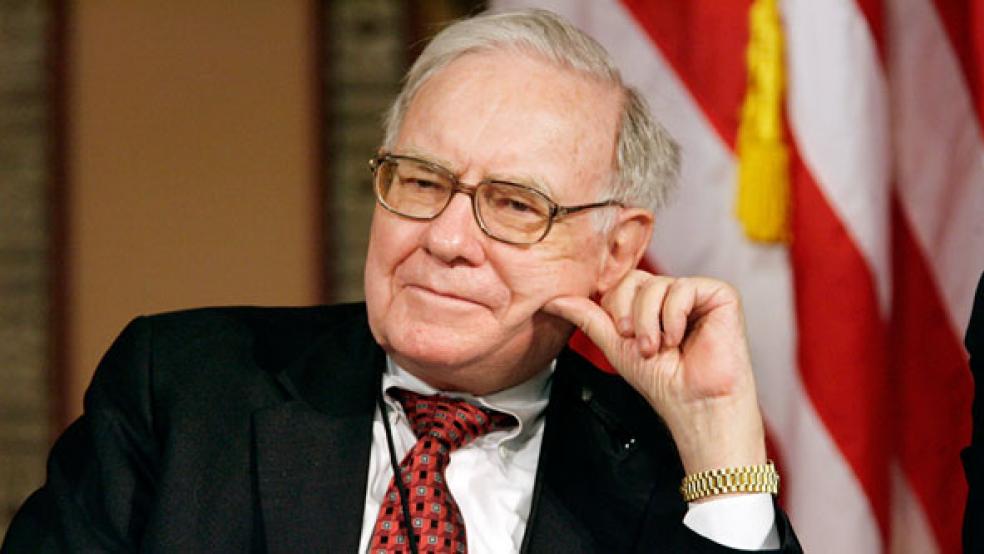Deals, deals, deals – and some very big ones.
After a long flirtation and courtship, AMR Corp., the parent of American Airlines, and US Airways Group (NYSE: LCC), have finally made their way down the aisle and are only pausing to see whether anti-trust regulators stand up to voice their objections to the union. That’s $11 billion.

Anheuser-Busch InBev (NYSE: BUD), in hopes of getting those regulators to sign off on its own marriage to Grupo Modelo of Mexico, announced plans to sell to Constellation Brands (NYSE: STZ) the rights to Corona beer and other brands in the United States: a $4.75 billion transaction that may (the parties hope) make it possible to pull off the larger $20.1 billion deal.
Cardinal Health (NYSE: CAH) plans to acquire AssuraMed for $2.07 billion in hopes of making bigger inroads into the home care market expected to grow because of the country’s demographic changes.
Then there was the elephant: Warren Buffett’s announcement that his Berkshire Hathaway (NYSE: BRK.A) holding company (along with buyout firm 3G Holdings) will pay $23 billion to purchase H.J. Heinz (NYSE: HNZ) – yup, the ketchup guys.
That $40 billion-plus worth of deals took place on just a single day on Wall Street. Add in the recent $24.4 billion buyout offer for Dell (NASDAQ: DELL) by founder Michael Dell and private equity firm Silver Lake (and leaving out the total value of the AB InBev/Grupo Modelo deal), and you’re looking at more than $65 billion of merger and acquisition activity in only a month. Plus, Liberty Global (NASDAQ: LBTYA) plans to snap up Virgin Media, the British cable business, for $16 billion. Comcast (NASDAQ: CMCSA) will spend $18.1 billion to buy General Electric’s (NYSE: GE)share of broadcaster NBCUniversal. Throw in the December announcement of a merger between NYSE Euronext (NYSE: NYX) and Intercontinental Exchange (NYSE: ICE), a deal valued at $8 billion. And those are just the transactions that grab headlines.
That’s not too shabby at all, given that we’re still struggling to emerge from what has been an anemic M&A climate. Thomson Reuters reported previously that M&A deal value rose only 2 percent last year to hit $2.6 trillion; Dealogic calculated that investment banks worldwide saw their fee revenue from those deals fall 8 percent to $18.7 billion (more than the overall 3 percent drop in total investment banking revenue last year), with M&A being overtaken by bond underwriting as the single largest source of fees during 2012. And fees for M&A transactions backed by “financial sponsors” (aka, the kind of buyout firms involved in the Heinz and Dell transactions) dropped 6 percent in 2012 to $3.1 billion.
As of early this morning, deals worth a total of $276.02 billion have been announced so far this year, according to Thomson Reuters, and although the number of deals is smaller than a year ago at this time, the value of those transactions is up significantly from $236.89 billion in the first six weeks of 2012. Apart from the first six weeks of 2010, when $376 billion of deals (mostly much smaller transactions) were announced, that makes this the best start for a year, in terms of M&A activity, since 2007, before the financial crisis briefly brought all but disaster-driven dealmaking to a near standstill.
So, what’s behind the buying frenzy? Three things: cash, interest rates, and growth. Cash is now abundant, even excessive, on the balance sheets of many companies. Interest rates remain at the lowest levels that most of us are likely to see in our lifetimes. Growth, whether we’re talking about revenue growth by S&P 500 companies or global economic growth, is still scarce, leaving many large corporations to rely on cost cutting to boost profitability. That trend was clearly evident in corporate earnings over the course of last year, as earnings grew at a faster pace than did revenue. It’s not surprising to find that several of these transactions come from the telecommunications arena, one of the parts of the market that has found it most difficult to generate higher earnings of late.
Together, these three factors combine to create an almost perfect storm for large U.S. companies. Their investors want growth – and they also are increasingly ill-tempered about the amount of cash sitting on corporate balance sheets, as the conflict between hedge fund manager David Einhorn and Apple’s management demonstrates dramatically. Back in 2007, cash on the balance sheets of S&P 500 companies totaled $564.8 billion, according to data provided by Thomson Reuters; today, it has soared to $920.2 billion. Meanwhile, the dividend yield hasn’t changed all that much, hovering around 2.05 percent.
With investors under pressure to put cash to work and to find a source of growth, and with interest rates so low (meaning that those who choose to turn to the debt markets to finance deals can do so reasonably cheaply), it was only a matter of time before M&A volumes took a dramatic leap upward. And there is little reason to suppose that the process will grind to a halt any time soon. Plenty of companies still face big strategic challenges (like Dell and fellow PC maker Hewlett-Packard). Plenty are struggling to stay afloat (like Best Buy, whose founder’s own attempt to make like Michael Dell may be doomed). And plenty feel that the value of their assets isn’t reflected in their share price (arguably, BlackBerry’s patent portfolio alone is worth more than the market currently ascribes to the value of the stand-alone business). On the other side of the equation, there are still plenty of potential acquirers sitting on large piles of cash – and more than enough eager bankers to help them.
Does that mean that it’s time to buy any potential buyout targets? Not necessarily. The history of big M&A deals suggests that a majority of these transactions won’t lead to long term gains in value for shareholders. If you’re a bond investor, you really don’t want to be owning debt issued by a company like Dell or Heinz that ends up being taken private in an LBO, and loaded up with new debt by its backers.
What you may want to do, however, is take another look at the investment banking firms, and particularly those boutique banks whose names dominate the list of those involved in advising both the acquirers and the target companies. Some of them aren’t public (or at least, not yet), including (sadly enough) Centerview Partners and Moelis & Co. But Evercore Partners reported last month that its revenue from investment banking revenue more than doubled in the fourth quarter of 2012, and that it beat analysts’ estimates with its profit for the period. Goldman Sachs appeared like a big loser yesterday, as its name was notably absent from the roster of advisors consulting on the deals just announced. But it’s hardly likely that will remain the case if the M&A boom continues.





